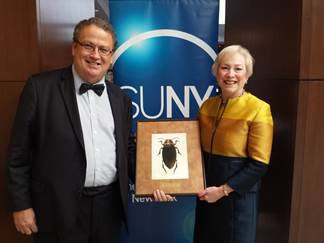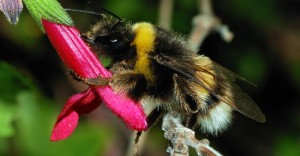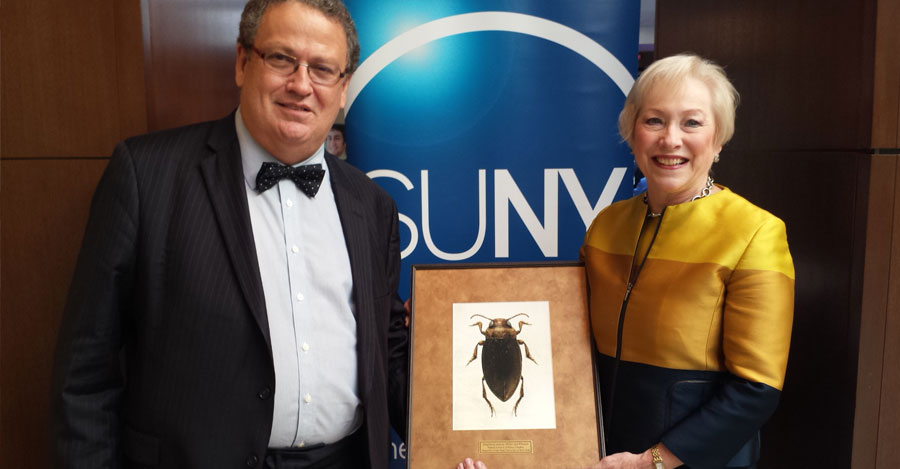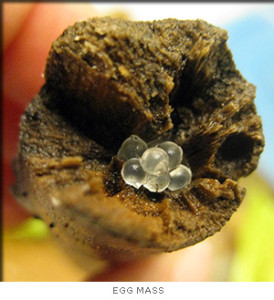SUNY’s gone buggy! Or at least that’s how it seems lately. No, it’s not an infestation, it’s a swarm of research and entomology. Of course SUNY has always had a relationship with these little creatures. With several entomology departments on campuses such as SUNY ESF, SUNY Geneseo, and Cornell University’s College of Agriculture and Life Sciences, that’s no surprise. And whether it was the “Spider Woman” of the Science Channel’s Monster Bugs Wars Dr. Linda Rayor visiting SUNY Orange or SUNY Empire State College‘s Beetle Project tracking the number of Japanese beetles in New York state, SUNY has been working hard to learn more about and spread the word on our favorite creepy crawlies.
In fact just this year SUNY ESF’s top 10 new species list included cartwheeling spiders, a protective momma wasp, and a giant stick bug! But in the middle of this swarm there are three recent stories that stand out: A unique new beetle named after our own Chancellor, the shrinking tongues of bumblebees, and the fight to prevent snail extinction.
Meet the Zimpherus nancae!
 This beetle may not be new-born, but it’s certainly new. It’s a newly discovered species of beetle named for the SUNY Chancellor. SUNY-ESF President Quentin Wheeler recently unveiled the new species they discovered and named “Zimpherus nancae” – after our very own Chancellor Nancy Zimpher! And this new bug is not just a new species, its also a new genus! This new genus bears similarities to both the Uvarus and the Microdessus but differs from each, meriting its own classification. Native primarily to Venezuela, these bug specimens were collected at a rainforest habitat near Cerro de la Neblina in Southern Venezuela.
This beetle may not be new-born, but it’s certainly new. It’s a newly discovered species of beetle named for the SUNY Chancellor. SUNY-ESF President Quentin Wheeler recently unveiled the new species they discovered and named “Zimpherus nancae” – after our very own Chancellor Nancy Zimpher! And this new bug is not just a new species, its also a new genus! This new genus bears similarities to both the Uvarus and the Microdessus but differs from each, meriting its own classification. Native primarily to Venezuela, these bug specimens were collected at a rainforest habitat near Cerro de la Neblina in Southern Venezuela.

This isn’t President Wheeler’s first rodeo. Wheeler became the fourth president of SUNY ESF on January 2, but he’s been working to name and discover new species for quite some time. From heading Cornell University’s entomology department, to serving as the entomology head at the Natural History Museum in London and founding the International Institute for Species Exploration at Arizona State University, Wheeler has named more than 100 new species, including bugs named for President George W. Bush and comedian Stephen Colbert!
The Tongue of the Bumblebee
 When you think of the effects of climate change, bee tongues probably aren’t the first thing on your mind. But maybe they should be on the list. Research from SUNY Old Westbury‘s Nicole Miller-Struttmann has shown that climate change is responsible for the rapid evolution of the long-tongued bumblebee, and they might soon be in for a name change!
When you think of the effects of climate change, bee tongues probably aren’t the first thing on your mind. But maybe they should be on the list. Research from SUNY Old Westbury‘s Nicole Miller-Struttmann has shown that climate change is responsible for the rapid evolution of the long-tongued bumblebee, and they might soon be in for a name change!
These long-tongued bees share a unique relationship with deep tube flowers like Parry’s clover and alpine skypilot. These flowers evolved with the bees in order to provide them exclusive access to their nectar. At least, that’s how it used to be. When compared to the length of their tongues in 1966 and 1980, today’s bees have tongues which are 61% shorter! The reason, researchers believe, is that it has been much drier in recent years.With changes in the global climate, summers have become hotter meaning water evaporates more quickly and snowfall thaws earlier in the year. Less water means fewer flowers, and for these bees that means less food. So in order to adapt, the bees no longer feast exclusively on the nectar of deep tube flowers. This means the long tongues are no longer the advantage they once were, so nature did what it does best, adapt. Bumblebee tongues are getting shorter each year, showing us that bumblebees aren’t the only bug with a few challenges in the wild.
Recovering at a snail’s pace
A grad student from SUNY College of Environmental Science and Forestry is making strides in protecting the endangered Chittenango ovate amber snail. The snail, which is nicknamed “Chit” resides exclusively alongside Chittenango Falls, about 22 miles southeast of Syracuse. Researchers have long feared the entire species might be wiped up in a single catastrophic event. And that was nearly the case when the population fell sharply following a landslide in 2006. To address this threat, Cody Gilbertson, a graduate student working in the laboratory of Dr. Rebecca Rundell, has worked to establish a captive breeding population in an ESF laboratory. Since June she has hatched over 600 baby snails!






